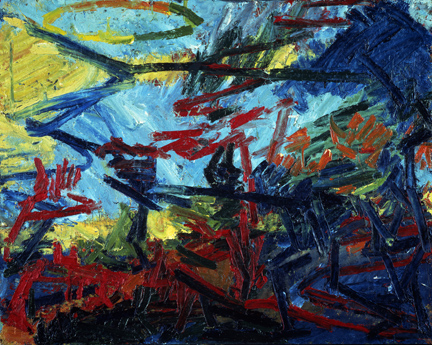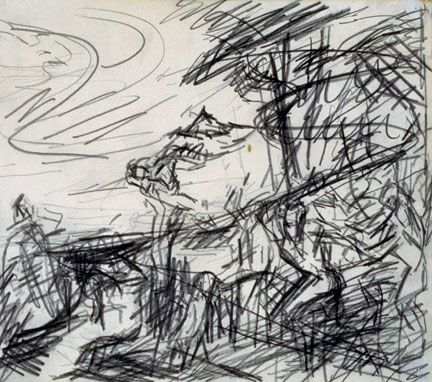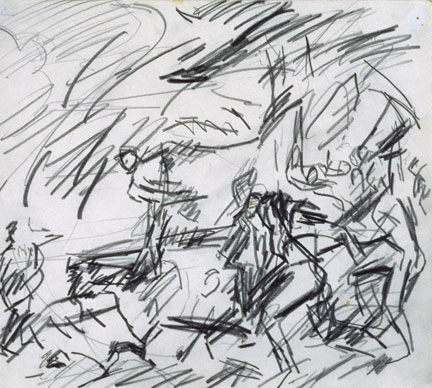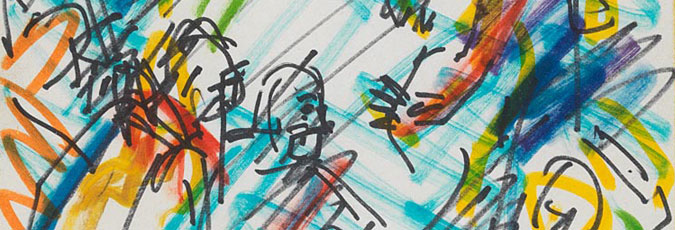Titian, ‘Bacchus and Ariadne’
Made 10 years after the painting from Rembrandt’s ‘Lamentation’, Auerbach’s version of Titian’s ‘Bacchus and Ariadne’ has a comparable geometrical scaffolding but this time the bright vibrant colours can be seen to refer directly to the characters and details of the Titian. The crown of stars with which Bacchus immortalises Ariadne, seen in the top left of Titian’s sky, swells in Auerbach’s version to a giant spinning wheel. The figure with a snake coiled around him is easy to spot in the Auerbach, as are the two main protagonists and, with a bit of effort, all of the other figures will be found to be in there. The features of the little satyr, skipping along at the front become comically enlarged and turn into, in Auerbach’s words, ‘a sort of froggy moon face’. To make the painting, Auerbach would begin each session of work with a trip to the National Gallery to make several new drawings from the painting, which he would take back to the studio, pin to the wall and work from. He never worked from any photographic reproduction but instead chose to make fresh drawings each day. These enabled him to feel a renewed charge of energy from Titian’s masterpiece and enabled him to complete what he describes as his ‘portrait’ of the original.
The joyous colours give a sense of exuberance and excitement as Auerbach distils the energy of Titian into his own contemporary language of painting.




